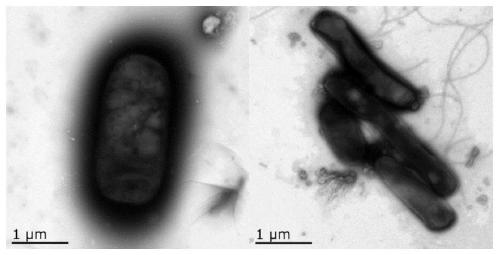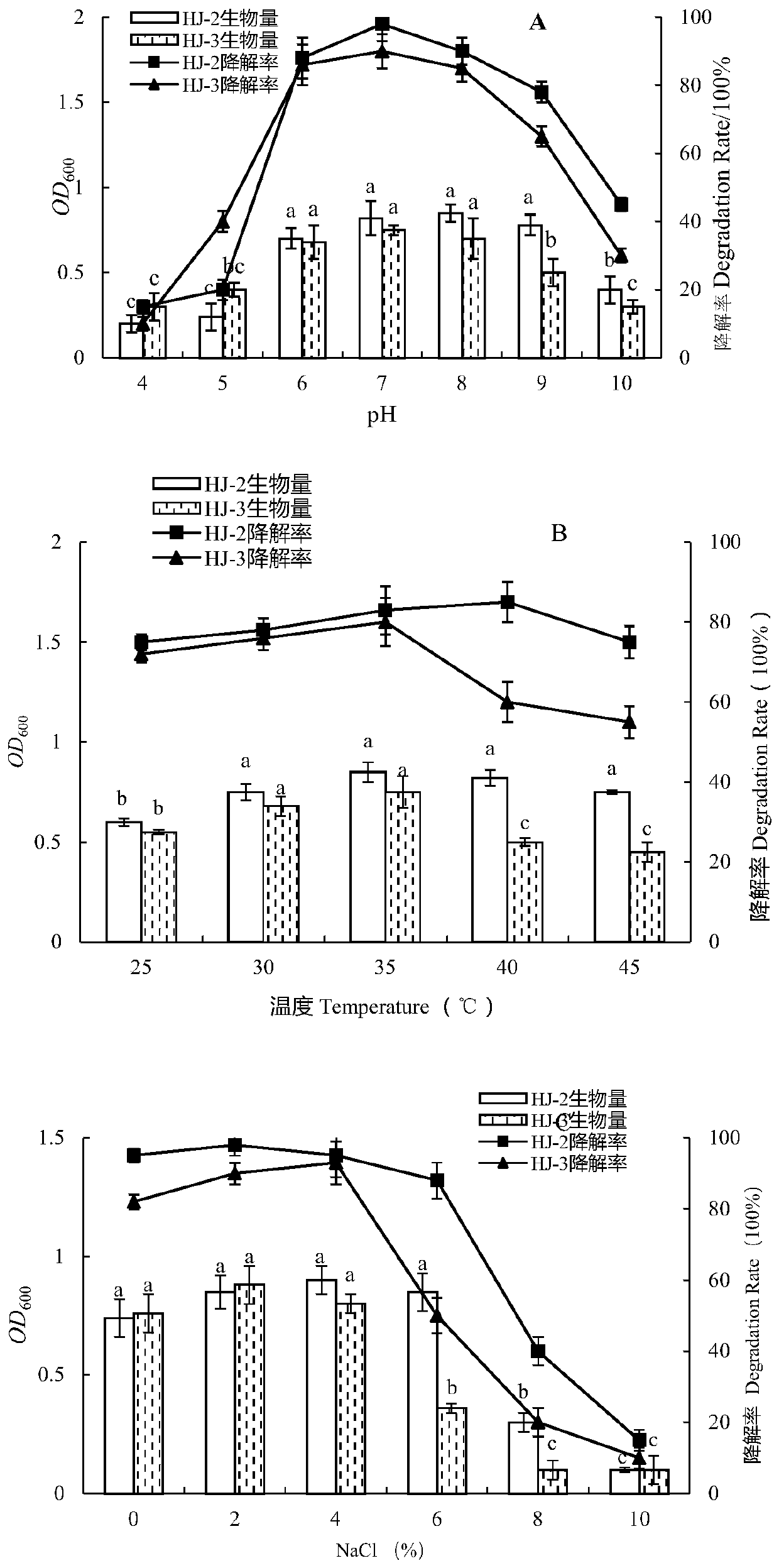Degradative bacteria capable of degrading allelochemicals in plant root exudates and application of degradative bacteria
A technology of allelochemicals and plant roots, applied in the field of microorganisms, can solve the problems of less research on peanut allelochemical-degrading bacteria and aggravation of peanut soil-borne diseases
- Summary
- Abstract
- Description
- Claims
- Application Information
AI Technical Summary
Problems solved by technology
Method used
Image
Examples
Embodiment 1
[0033] Screening of degrading bacteria:
[0034] The screening of degrading bacteria adopts a domestication method that uses benzoic acid as the sole carbon source and gradually increases the concentration of benzoic acid. The specific operation is as follows: accurately weigh 10 g of soil sample, add it to a triangular flask containing 90 ml of sterile water, and fully shake it in a constant temperature shaker for 30 minutes to prepare a soil suspension with a concentration of 1:10. After the soil particles settle, absorb 1ml supernatant and transfer it into a test tube containing 9ml sterile water to make 10 -2 Bacteria suspension, and so on, make 10 -3 , 10 -4 , 10 -5 , 10 -6 , 10 -7 的bacterium suspension. Choice 10 -4 , 10 -5 , 10 -6 , 10 -7 The four concentrations of 100μl each are added to the benzoic acid selection medium, and the benzoic acid concentration is 5, 10, 15, 20 mg·L -1 Increase gradient domestication and enrichment of degrading bacteria in turn. After several...
Embodiment 2
[0041] Identification of degrading bacteria:
[0042] (1) Identification of morphological characteristics of degrading bacteria
[0043] After the degrading bacteria are cultured on LB medium for 18 hours, observe the colony shape, size, color, transparency, viscosity, wetness, ridge and edge characteristics of the degrading bacteria, and whether they produce pigments, etc., and observe the bacteria with a high-power microscope after staining Gram stain, flagella, capsule, spore and other structures. After the bacterial liquid was dehydrated and freeze-dried by glutaraldehyde-fixed ethanol, the size and surface structure of the bacterial body were observed by scanning electron microscope.
[0044] (2) Determination of physiological and biochemical characteristics of degrading bacteria
[0045] After the degrading bacteria were cultured on LB medium for 18 hours, litmus milk, glucose, methyl red reaction, VP test, indole reaction, citrate, starch hydrolysis, gelatin liquefaction, cont...
Embodiment 3
[0056] Influence of environmental factors on the degradation characteristics of degrading bacteria
[0057] In order to study the degradation of benzoic acid by degrading bacteria HJ-2 and HJ-3 under different environmental conditions, three influencing factors of initial pH, temperature, and NaCl concentration were selected as the research objects, and single factor experiments were carried out.
[0058] (1) Initial culture pH
[0059] Degrading bacteria are inoculated to 20mg·L according to 0.1% (OD600nm=0.8) inoculum -1 Benzoic acid and pH 4, 5, 6, 7, 8, 9, 10, respectively, in inorganic salt culture solution, 30℃, 180r·min -1 After shaking culture for 48 hours, the growth of the bacteria and the degradation rate of benzoic acid were measured. The growth of the bacteria was compared with the culture medium without degrading bacteria, and the treatment was repeated 3 times. The absorbance value at 600nm after the treatment was measured, and the degradation rate of benzoic acid was ...
PUM
 Login to View More
Login to View More Abstract
Description
Claims
Application Information
 Login to View More
Login to View More - R&D
- Intellectual Property
- Life Sciences
- Materials
- Tech Scout
- Unparalleled Data Quality
- Higher Quality Content
- 60% Fewer Hallucinations
Browse by: Latest US Patents, China's latest patents, Technical Efficacy Thesaurus, Application Domain, Technology Topic, Popular Technical Reports.
© 2025 PatSnap. All rights reserved.Legal|Privacy policy|Modern Slavery Act Transparency Statement|Sitemap|About US| Contact US: help@patsnap.com



